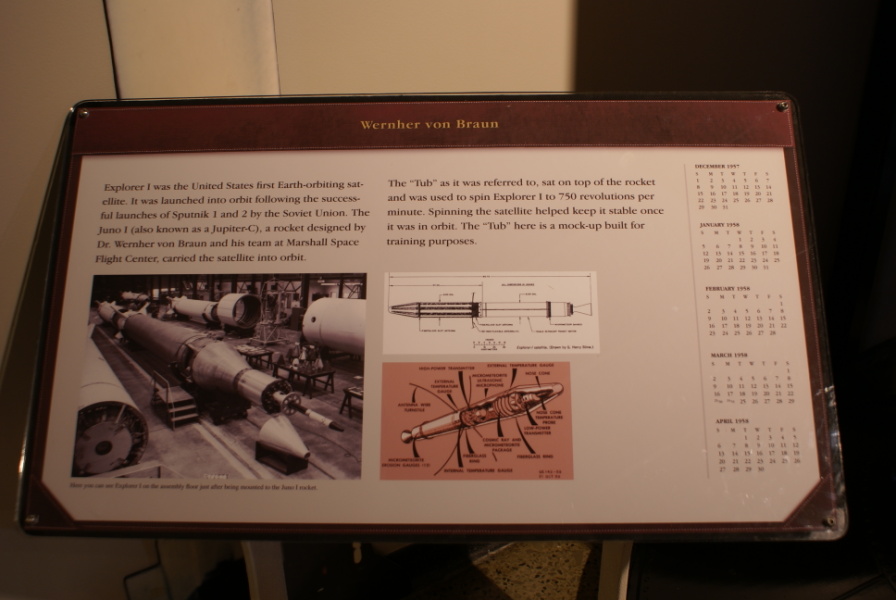| Prev |
heroicrelics.org U.S. Space & Rocket Center Site Index Juno/Jupiter-C Upper Stages Mockup Gallery |
Next |
dsc80867.jpg
The sign accompanying the mockup.
It reads
Explorer I was the United States' first Earth-orbiting satellite. It was launched into orbit following the successful launches of Sputnik 1 and Sputnik 2 by the Soviet Union. The Juno I (also known as a Jupiter-C), a rocket designed by Dr. Wernher von Braun and his team at Marshall Space Flight Center, carried the satellite into orbit.The "Tub" as it was referred to, sat on top of the rocket and was used to spin Explorer I to 750 revolutions per minute. Spinning a satellite helped keep it stable once it was in orbit. The "Tub" here is a mock-up built for training purposes.
Another reason about which I've read for spinning the upper stage was to minimize the variations in thrust: The first of the tub's stages (i.e., the second stage of the launch vehicle, with a Redstone or Jupiter serving as the launch vehicle's first stage) consisted of eleven scaled-down Sergeant rocket motors and the third stage consisted of three of these motors. Rotating the tub served to minimize the effects of thrust variations between the individual motors of each stage.

| Time picture taken | Mon Jan 16 16:52:42 2012 |
| Location picture taken |
Space Hall "Old" Museum U.S. Space & Rocket Center Huntsville, AL |
| Prev |
heroicrelics.org U.S. Space & Rocket Center Site Index Juno/Jupiter-C Upper Stages Mockup Gallery |
Next |